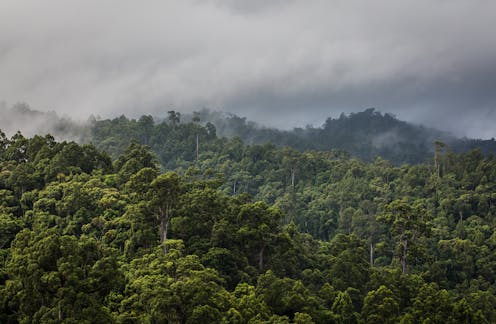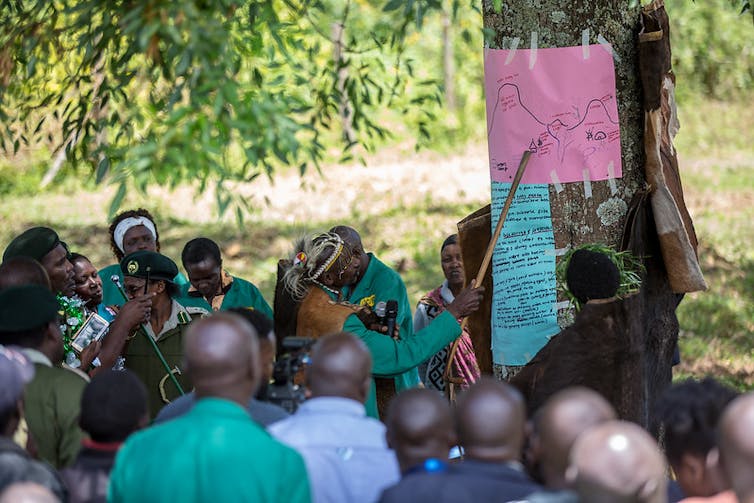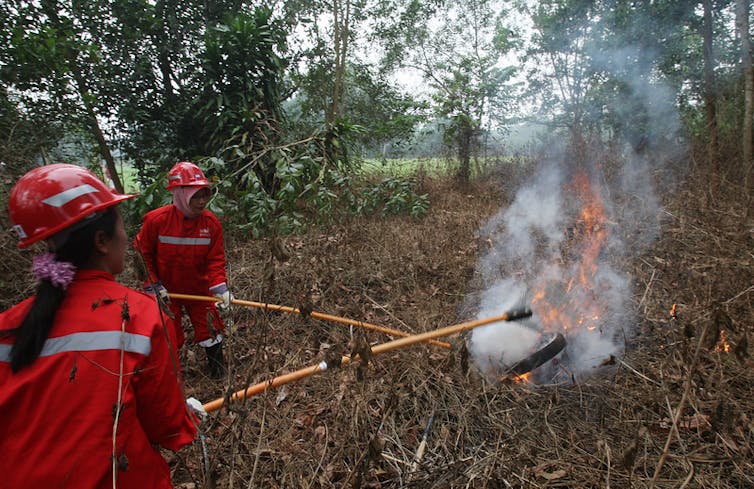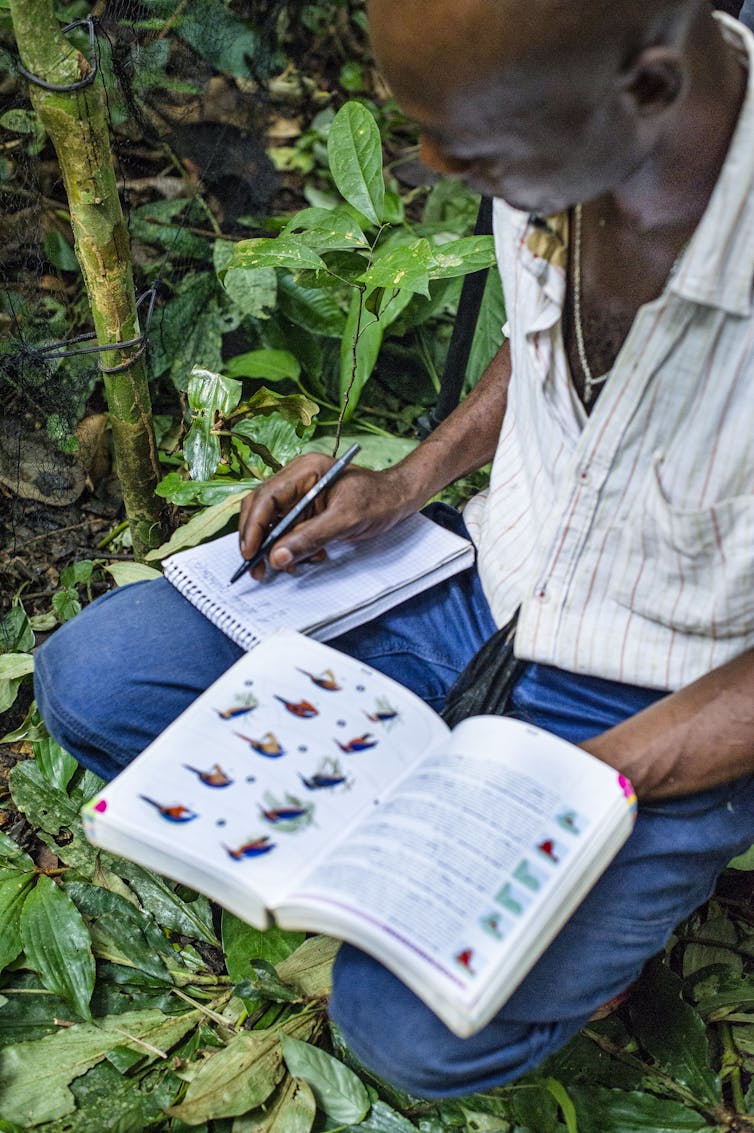
REDD+ is the United Nations’ deforestation and forest degradation reduction program. It was established nearly 20 years ago and is still active in more than 65 countries.
Read more: How can Indonesia improve REDD+ to stop deforestation?
REDD+ allows people who protect local forests to receive payments, usually from developed countries. The intention is to make saving forests more economically attractive than destroying the forests.
The total value of its activities is about US$2.9 billion. This includes nations with vast rain forests as recipients like Indonesia, the Democratic Republic of Congo and Brazil.
To ensure equity, the distribution of REDD+ benefits must consider various factors, including who receives the funds and how they are distributed.
After nearly twenty years, allocating REDD+‘s limited funds remains a challenging task. Why is this so? And how could it be improved?
Who should get benefits from REDD+?
REDD+ implementation involves the work of a diverse range of actors with various roles and responsibility, from the highest level of governments down to the grassroots level. As such, there is disagreement over who should get the payments.
Some argue that actors who hold legal rights to the land and actively participate in emission reduction efforts should receive the benefits. One example from this category is farmers who own the land.

Others think indigenous communities who have a historical connection with their forest land should receive the benefits.
Others argue payments should go to the poorest members of society so that REDD+ can help reduce poverty and promote sustainable development.
There are also groups who believe that institutions (including governments) acting as REDD+ facilitators should receive the payment, simply because REDD+ cannot be implemented without their involvement.
These different opinions complicate REDD+ fund distribution.
The government-led REDD+ program in East Kalimantan Province, Indonesia, shows how many people need to be involved. All stakeholders ranging from national to village-level governments, local and customary community groups and even private companies, have specific roles in reducing emissions.
Under this REDD+ program, the government and community groups receive an agreed-upon share of the payment, while the private sector gets non-monetary benefits, like enhancing their sustainable practices through capacity building.
Different distribution justifications
There at least three ways how REDD+ funds are being distributed.
1. Direct cash based on performance
Paying households or individuals based on their efforts to protect or restore forests is the best option of REDD+. However, it is also the rarest and hardest one to implement so far.
One example is a forest restoration project initiated by private company Bosques Amazonicos SAC with Federation of Brazil nut producers in Madre de Dios, Peru. Prior to 2021, the company distributed 30% of the carbon sales revenue to the participating landholders.
However, from 2021 onwards, the company reported revenue will be distributed equally between all parties once the project is able to sell more carbon credits, meaning the landholders will get more portion of payment.

A study conducted in 2020 by the Vietnam National University of Forestry discovered the Payment for Forest Environmental Services program brought significant positive changes to a local community who guarded the forest and prevented forest fire in Vietnam. This program offers money based on how well forests are taken care of.
However, the effect of payment on people’s livelihoods varies based on the local situation. In places like Lam Dong province, where there’s a substantial forest area, it notably boosts household incomes. Yet, in areas like Dak Lak province, the payments are less appealing compared to other options like coffee farming.
2. Non-cash/in-kind, but also based on performance
This is the most common benefit generated and distributed by REDD+.
Non-cash payment in REDD+ is a form of payment that does not involve money. The project administrator will provide these rewards once certain conditions, like successful forest conservation activities or meeting specific environmental goals, are fulfilled.
The reason behind it is REDD+ should impact both forests and local communities. It’s not only about saving trees or stopping deforestation; it also aims to improve people’s lives by meeting their social and economic needs. So, the benefits go beyond just money – they address important community concerns as well.
One REDD+ project in Jambi (an Indonesian province located in central Sumatra), for example, distributes payments to the community in accordance with their aspirations, be it for food provision or funding religious activities of the communities’ choosing.
In Central Kalimantan, a REDD+ project partnered with the local government to provide a floating health clinic, which now regularly visits and provides basic healthcare services in multiple remote village areas along the river.
3. Pre-payments to induce performance
Pre-payments are upfront expenses paid by donor or government to help individuals overcome the potential losses from choosing a different way to use land.
These pre-payments may seem not ideal but in some places, this arrangement might be necessary otherwise they would not be able to participate in REDD+.

In Democratic Republic of Congo, the government-led Maï-Ndombe REDD+ program receives financial support from the Forest Carbon Partnership Facility – a global partnership of governments and non-government organisations for REDD+.
The partnership will provide a minimum of $5.3 million to help cover start-up costs and an additional amount of up to $1.9 million if the program successfully reduces emissions.
Similarly in Vietnam’s REDD+ program, the government has committed to allocate $1.8 million (3.5% of the total net payment of $51.5 million) to fund REDD+ preparation activities at the national level.
The activities include establishing new regulations, strengthening law enforcement and monitoring capacities. Donors will distribute the rest of the funds to the government and organisation, community and eligible individuals once the program has achieved emission reduction targets.
Way forward
It’s important to have an equitable process to distribute REDD+ funds that takes into account different goals and the interests of all stakeholders involved.
We should ensure fair and equal sharing of benefits in REDD+ design by following clear principles and implementing strong social safeguards. These principles include considering contributions of all actors, meeting needs, and promoting equality.
The world must continuously learn, adapt and refine REDD+ implementation. We hope to see it implemented more efficiently in many locations, on a bigger scale.
This research is part of CIFOR's Global Comparative Study on REDD+ (www.cifor.org/gcs). The funding partners that have supported this research include the Norwegian Agency for Development Cooperation (Norad, Grant No. QZA-21/0124 ), International Climate Initiative (IKI) of the German Federal Ministry for the Environment, Nature Conservation, and Nuclear Safety (BMU, Grant No. 20_III_108), and the CGIAR Research Program on Forests, Trees and Agroforestry (CRP-FTA) with financial support from the CGIAR Fund Donors.
This article was originally published on The Conversation. Read the original article.







